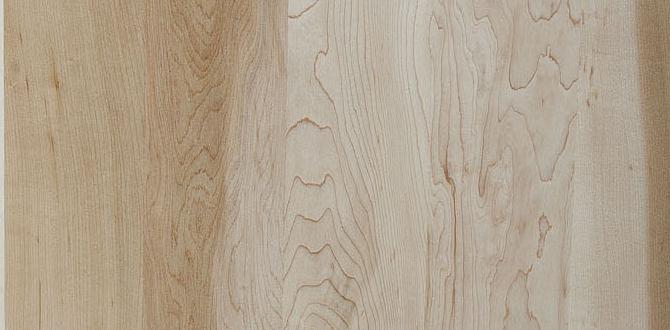Quick Summary
Choosing the proper air hose size for your pneumatic nailer is crucial for optimal performance. The right size ensures sufficient airflow, preventing nailer jams and ensuring consistent power. Generally, a 3/8-inch interior diameter hose is ideal for most common nail guns, balancing airflow with flexibility.
Hey there, DIY warriors! Jack Shaffer, your Nailerguy, here. Ever grab your trusty pneumatic nailer, ready to tackle that trim project, only to have it sputter or fail to drive nails flush? It’s a frustrating moment, and often, the culprit isn’t the nailer itself, but something as simple – and overlooked – as the air hose. Getting the air hose size right is like giving your nailer the perfect diet; too little, and it’s weak, too much, and it’s overkill. But don’t worry, we’re going to break down exactly what you need to know. By the end of this guide, you’ll be a pro at selecting the perfect air hose, ensuring your nailer performs its best, every single time. Let’s get your projects powered up correctly!
Table of Contents
Why Air Hose Size Matters More Than You Think
So, you’ve got a sleek new pneumatic nailer – maybe a brad nailer for delicate trim, a framing nailer for sturdy construction, or a roofing nailer for that weekend shingle job. You hook up an air hose, and away you go! But if you’ve ever experienced weak nail drives, inconsistent firing, or even your nailer just plain giving up mid-project, the size of your air hose could be the silent saboteur. It’s not just about length; the inner diameter (ID) of your air hose plays a massive role in how much compressed air can actually reach your tool. Think of it like a drinking straw: a wide straw lets you slurp your milkshake quickly, while a skinny one makes it a slow, frustrating trickle. Your nailer needs a good, consistent flow of air to operate at its best, and the hose is the pathway. Get it wrong, and you’re fighting your tool instead of working with it.
Understanding Airflow: The Science Behind the Power
Compressed air is the lifeblood of any pneumatic tool. When you pull the trigger on your nailer, a surge of air is released from your compressor tank, pushing a piston that drives the nail into the material. This process requires a specific volume and pressure of air delivered quickly. This is where the concept of airflow, often measured in Cubic Feet per Minute (CFM), comes into play. Every pneumatic tool, including your nailer, has a CFM requirement listed in its specifications. This tells you how much air the tool needs to operate effectively at its intended pressure (measured in Pounds per Square Inch, or PSI).
Your air compressor is rated to deliver a certain amount of CFM at a specific PSI. The air hose acts as the conduit between the compressor and the nailer. If the hose’s internal diameter is too small, it creates a restriction, or a bottleneck, in this airflow. This restriction causes a drop in pressure and a reduction in the total volume of air that can pass through it in a given time. Even if your compressor is powerful enough and the nailer is rated for a certain CFM, a restrictive hose can starve the tool, leading to the performance issues we talked about.
Essentially, the hose needs to be wide enough to allow the full CFM and PSI requirements of your nailer to be met without significant loss. This ensures that every nail is driven with the consistent force needed for a clean, professional finish. Ignoring this can lead to more than just frustration; it can also put unnecessary strain on your compressor as it tries to compensate for the reduced airflow, potentially shortening its lifespan.
The Role of PSI and CFM
Let’s quickly touch on PSI and CFM again because they are intertwined with hose size. PSI (pounds per square inch) is the pressure of the air. CFM (cubic feet per minute) is the volume of air delivered over time. Nailers generally operate within a range of 70-120 PSI. The CFM rating is crucial because it tells you how quickly the nailer uses air. A framing nailer, for example, uses a lot of air in a short burst, so it needs a hose that can deliver that volume rapidly. A small brad nailer uses less air, so it’s a bit more forgiving, but still benefits from adequate airflow.
A hose that’s too small will cause a significant pressure drop between the compressor and the tool. This means your nailer might be receiving much less than the 90 PSI it needs to drive a nail properly, even if your compressor is set to 100 PSI. The CFM can also be restricted, meaning the tool doesn’t get the burst of air it needs for a strong strike. This is a common source of those frustrating ‘half-driven’ nails.
Decoding Air Hose Specifications: What to Look For
When you’re at the hardware store or browsing online, you’ll see air hoses listed with a few key specifications. Understanding these will help you make the right choice. Don’t let the jargon scare you; it’s pretty straightforward once you know what each term means.
Interior Diameter (ID)
This is probably the MOST important specification for determining proper air hose size. The ID is the actual width of the opening inside the hose. It’s usually measured in inches (e.g., 1/4″, 3/8″, 1/2″). A larger ID means more air can flow through the hose at any given moment. For most common pneumatic nailers used by DIYers and woodworkers, a 3/8-inch ID is the sweet spot. Smaller hoses (like 1/4-inch) are often too restrictive for nailers, though they might be okay for very light-duty air tools like air dusters or small airbrushes. Larger hoses (like 1/2-inch) are typically used for high-demand tools like large sanders or some spray guns, and are usually overkill for nailers.
Length
The length of the hose is important for maneuverability. You want a hose that’s long enough to comfortably reach all corners of your project without being so long that it becomes a tripping hazard or tangles easily. Common lengths range from 25 feet to 100 feet. While longer hoses offer more reach, remember that increased length, especially with a smaller ID, can also contribute to pressure drop. It’s best practice to use the shortest hose that meets your needs.
Material
Air hoses are made from various materials, each with pros and cons:
- Rubber: Durable, flexible, and good in cold temperatures. Can be heavier than other options. Often a good choice for workshop use.
- PVC (Polyvinyl Chloride): Lightweight, inexpensive, and highly resistant to kinks and abrasion. However, PVC can become stiff and brittle in cold weather and may crack over time with heavy use.
- Polyurethane: Lightweight, flexible, and abrasion-resistant. It performs well across a range of temperatures. Often considered a good all-around choice for durability and flexibility.
- Nylon: Very strong and kink-resistant, but can be less flexible, especially in cold.
For general nailer use, a good quality rubber or polyurethane hose will serve you well. If you work in a very cold garage, a hose designed for cold-weather flexibility is a wise investment.
Couplings and Fittings
These are the connectors at the end of the hose that attach to your compressor and your nailer. They need to be compatible with your tools and designed for good airflow. Common types include:
- Industrial Couplers (e.g., Tru-Flate, Milton V-Style): These are robust and generally offer good airflow. They typically have a sleeve that you pull back to connect/disconnect.
- “Auto” or “M-Style” Couplers: These are common in home centers and hobbyist kits. They’re inexpensive but can restrict airflow more than industrial types, especially if they are a smaller size.
Look for brass or steel fittings for durability. Ensure the fittings are the correct size for your compressor’s air outlet (often 1/4-inch NPT, which is standard) and your nailer’s air inlet. Most nailers will come with a fitting, but it’s good to be aware.
Choosing the Right Air Hose Size for Your Nailer
This is where we get down to brass tacks. The “right” size depends on the type of nailer you’re using and its specific air demands.
General Rule of Thumb: The 3/8-Inch Standard
For the vast majority of pneumatic nailers used by DIYers and woodworking enthusiasts – including framing nailers, finish nailers, brad nailers, and even staplers – a 3/8-inch interior diameter (ID) air hose is the recommended standard. Why 3/8-inch? Because it strikes an excellent balance:
- Adequate Airflow: It’s capable of delivering enough compressed air volume at the necessary pressure to power most nailers efficiently.
- Reduced Pressure Drop: Compared to smaller hoses (like 1/4-inch), a 3/8-inch hose significantly reduces artificial pressure loss as air travels from the compressor to the tool. This means your nailer gets closer to the PSI set on your compressor.
- Manageable Size: It’s not excessively bulky or heavy, making it easier to manage around a job site or workshop without being overly cumbersome.
- Common Availability: 3/8-inch hoses and their associated fittings are widely available and often the default choice for tool kits.
If you own a framing nailer, a finish nailer, or a general-purpose nailer, you’re almost certainly going to do just fine with a 3/8-inch ID hose. It’s a safe bet that will support most of your nailing needs.
When a Smaller Hose (1/4-Inch ID) Might Suffice
A 1/4-inch ID hose is generally too small for most pneumatic nailers, especially framing and construction nailers. However, it might be acceptable for:
- Very Light-Duty Brad Nailers or Staplers: If you are using an extremely small, lightweight brad nailer that fires very short nails (like 1/2-inch or 3/4-inch) for very light craft projects, and your compressor is nearby, a 1/4-inch hose might get by.
- Non-Nailer Air Tools: Hoses with a 1/4-inch ID are perfectly suitable for many smaller air tools such as blow guns, tire inflators, or small airbrushes that have very low CFM and PSI requirements.
The caveat here is performance. Even with these light tools, you might notice a slight decrease in performance compared to using a larger hose. For nailers, using a 1/4-inch hose is almost always going to lead to disappointment and poor performance.
When a Larger (“Worm Gear”) Hose (1/2-Inch ID) Might Be Necessary
Larger diameter hoses, like 1/2-inch ID, are designed for tools that have very high CFM demands. These are typically industrial tools, not common woodworking nailers. Examples include:
- Large Pneumatic Sanders: Especially orbital or belt sanders that require a constant, high volume of air.
- Impact Wrenches: Larger impact wrenches used in automotive repair.
- Air-Powered Paint Sprayers: Some high-volume spray guns.
- Grinders: High-power pneumatic grinders.
For 99% of nailer applications, a 1/2-inch hose is overkill. It’s heavier, bulkier, and more expensive, and won’t provide any significant benefit to your nailer. In fact, if the coupler on a 1/2-inch hose is also larger, it might not even fit the typical 1/4-inch NPT fitting on most nailers without an adapter, which can further complicate things and potentially restrict flow.
Table: Recommended Air Hose ID by Nailer Type
Here’s a quick reference to help you choose the right hose diameter for your specific nailer. Remember, the Interior Diameter (ID) is key!
| Nailer Type | Typical PSI Requirement | Typical CFM Requirement | Recommended Air Hose ID | Notes |
|---|---|---|---|---|
| Framing Nailer | 70-120 PSI | 2.0 – 5.0 CFM | 3/8-inch | High demand; requires ample airflow for powerful drives. |
| Construction/Sheathing Nailer | 70-120 PSI | 1.5 – 4.0 CFM | 3/8-inch | Similar to framing nailers, needs consistent power. |
| Finish Nailer | 70-100 PSI | 1.0 – 2.5 CFM | 3/8-inch | Delicate work, but still needs enough air for clean finishes. |
| Brad Nailer | 60-100 PSI | 0.5 – 1.5 CFM | 3/8-inch (recommended) 1/4-inch (maybe for very specific light use) |
3/8-inch is still best for consistent performance. 1/4-inch risks underperformance. |
| Pin Nailer | 60-100 PSI | 0.2 – 0.7 CFM | 1/4-inch (acceptable) 3/8-inch (optimal) |
Very low air demand; 1/4-inch might work, but 3/8-inch still offers better stability. |
| Stapler (Construction/Upholstery) | 70-110 PSI | 1.0 – 3.0 CFM | 3/8-inch | Requires steady airflow for consistent stapling. |
| Air Duster / Blow Gun | NR (Not Rated/Variable) | NR (Variable) | 1/4-inch or 3/8-inch | Low demand; 1/4-inch is often sufficient. |
Note: CFM figures can vary significantly based on the specific tool model and manufacturer. Always check your tool’s manual for exact specifications.
Optimizing Your Air Hose Setup: Beyond Just Diameter
Once you’ve settled on the right diameter, there are a few other things you can do to ensure your nailer runs like a dream.
Hose Length and Its Impact
As mentioned, longer hoses can cause pressure drops. This is because air moving through a long, narrow tube encounters more friction. This friction acts to slow down the air and reduce its pressure.
The Rule of Thumb: For every 25 feet of additional hose length, you can expect a pressure drop of about 1-2 PSI. This might not sound like much, but for tools operating at the lower end of their PSI range, it can make a difference.
Best Practices:
- Use the shortest hose that comfortably reaches your work area.
- If you need a very long run, consider using a larger diameter hose (e.g., 1/2-inch) for that long section to minimize pressure loss.
- Alternatively, consider using an open-ended hose setup where you have a short hose connecting to your compressor, and a longer main hose running to your tool.
Hose Reels and Management
A tangled hose is not only a nuisance but can also kink and restrict airflow. Investing in a good quality hose reel, whether manual or automatic, can make a huge difference in usability and hose longevity. It keeps your workspace cleaner and your hose ready to deploy without a fight.
Maintenance for Longevity and Performance
Your air hose is a workhorse. Keeping it in good condition ensures it performs optimally and lasts longer:
- Inspect regularly: Look for cuts, cracks, bulges, or worn spots. A damaged hose can burst under pressure, which is dangerous. Immediately replace any damaged hose.
- Drain your compressor tank: Condensation can build up. Draining the tank regularly (as recommended by your compressor manufacturer, often daily) prevents water from entering your air line and tools, which can cause corrosion and damage. Some people like to use an inline air dryer or water separator for ultimate protection.
- Coil it properly: When storing your hose, coil it loosely to avoid stressing the material, especially at the fittings. Avoid sharp kinks.
- Clean it: Wipe down your hose periodically to remove dirt and debris.
Air Tool Oil
While not directly about the hose size, remember that pneumatic nailers, especially reciprocating ones, benefit from occasional lubrication with specialized air tool oil. A few


